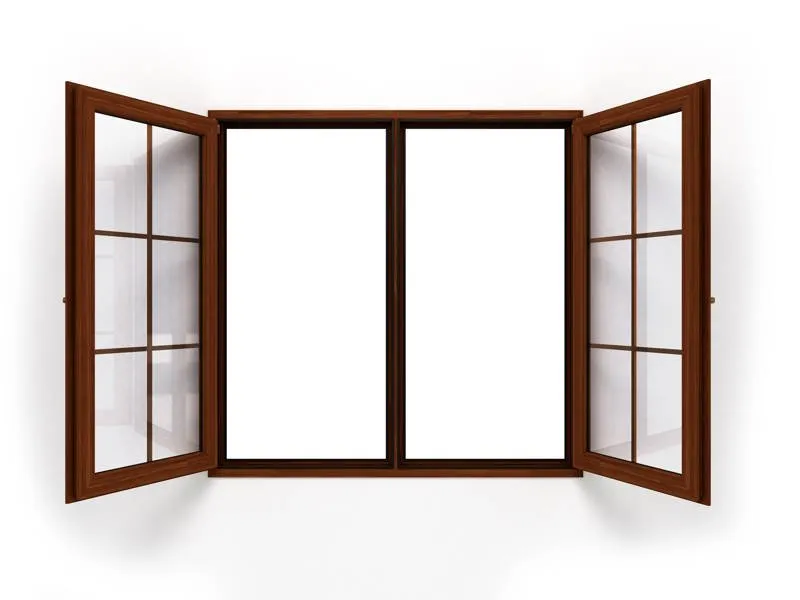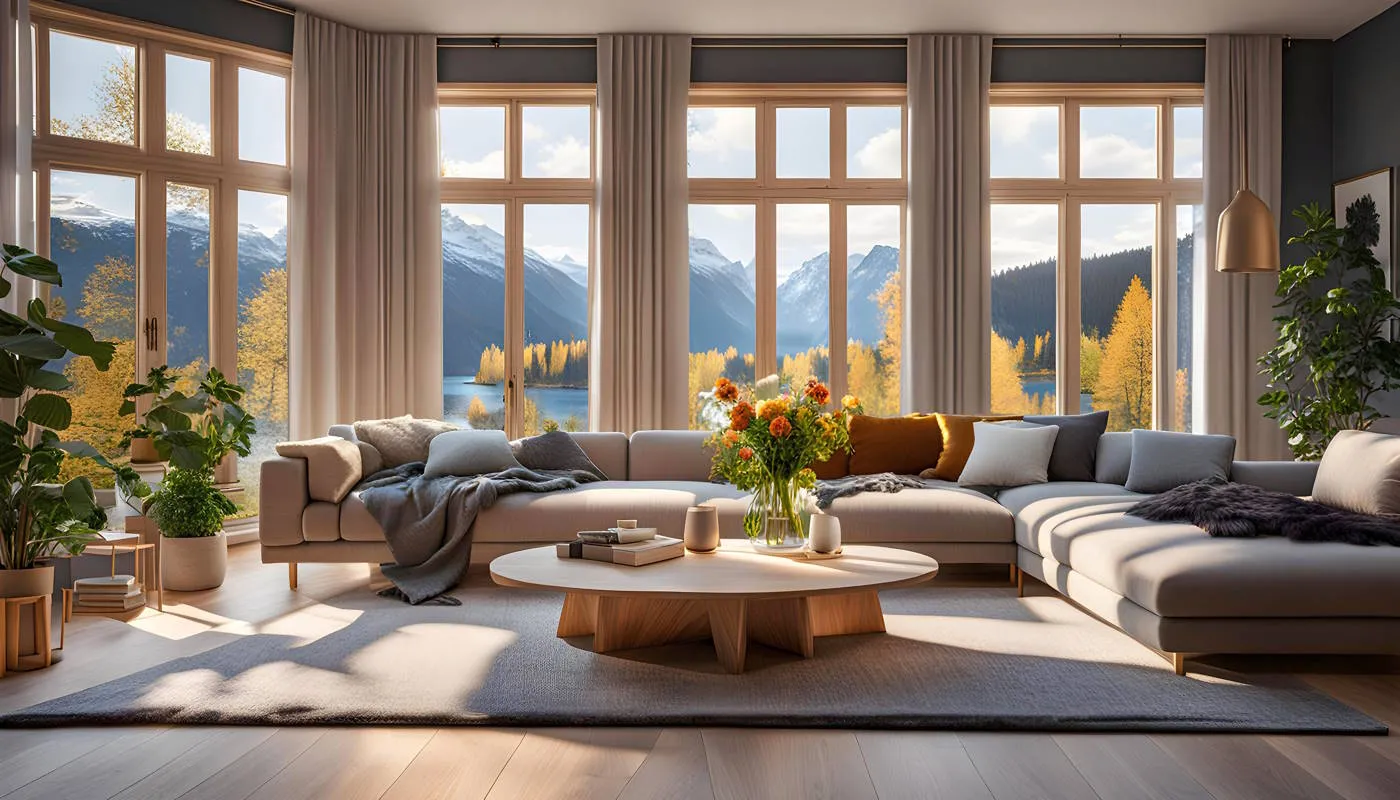What Are Casement Windows?
As a window replacement company with 40+ years under our belt, we’ve heard people call casement windows by numerous names: swinging windows, crank windows, crank out windows, hinged windows, crank open windows, windows that open out, roll out windows, swing out windows and the list goes on. No matter what you call them, casement windows are a perfect combination of form and function and will enhance your home with a distinctive appeal.
But what are casement windows? Casement windows are a type of window that attaches to its frame by one or more hinges at the side. They open outward like a door, usually with the help of a handle or a crank.
Advantages of Casement Windows
Unobstructed Views
The first thing you notice about casements is the unobstructed view of the outdoors. It doesn’t matter what the view is; casements just catch your eye. If you’ve ever been in a home with a full wall of casement windows, you know what we mean.
With single and double-hung windows, the sash of the two windows meets in the middle, forming a horizontal line. The horizontal line breaks the outside view into two pieces, top and bottom. Casements, on the other hand, are typically a full piece of glass with no break in the middle. Of course, there are exceptions where people have installed grilles or blinds in their casements. But typically, in Colorado, you’ll see full panes of glass that offer a large view that brings the outdoors inside and makes the room feel that much bigger.
Fresh Air
If you love fresh air, casements can’t be beat. One of their great advantages is the ability to direct airflow into your home. If you love a cool breeze and the prevailing winds don’t currently bring the breeze into your home, choose a casement window that opens away from the prevailing breeze to guide it into your home. For instance, if your home faces east and winds come from the west, choose a casement window with hinges on the east side capturing the west wind. The open window will redirect the airflow and bring fresh air into your home.
Security
Another advantage of casement windows is security. People consider casement windows to be the most secure due to their unique locking mechanism. They feature hook-shaped locks that embed directly into the frame, making it difficult for them to pry open from the outside. Additionally, the crank of casement windows has a limiter in the gear mechanism that will stop the window from opening past the position where you left it. This prevents them from opening further from the outside without breaking the window altogether. A single, or double-hung window that is left open the slightest bit can be lifted further to gain entry.
Energy Efficiency
When it comes to windows, casements are the energy-efficient choice for homeowners seeking both style and sustainability. Unlike traditional windows, casements come with a seal that’s air-tight when closed, drastically reducing the risk of energy leaks. This design makes casement windows incredibly energy-efficient, ensuring your home stays warm in the winter and cool in the summer without overworking your HVAC system. Better energy efficiency means lower utility bills and a smaller carbon footprint—a win-win for both you and the planet.
Energy Conservation
In addition to being energy efficient, casement windows also aid in energy conservation. When you use casement windows in your home natural light is maximized, and the need for artificial lighting is reduced. And when the breeze is just right, you can swing the window open for optimal ventilation reducing the need for air conditioning.
Types of Casement Windows
Double Casement Windows
Double casement windows consist of two casement windows side by side, each opening outward from a central mullion. This design doubles the airflow and provides a symmetrical aesthetic that enhances both traditional and modern homes. Ideal for larger openings, double casements offer expansive views and increased ventilation, making them a practical choice for living rooms, kitchens, and other spacious areas.


French Casement Windows
A charming addition to any home, French casements are used in residential construction. They feature two sashes that open without a central pillar, providing a full, unobstructed view. They operate without a mullion, allowing for a wider opening that enhances access and invites more natural light. Perfect for romantic or country-style homes, they add an elegant, classic touch to architecture.
Push Out Casement Windows
Push-out casement windows are a classic alternative to crank-operated casement windows. They open outward with a simple push, offering a more streamlined look without the mechanical components of traditional casements. Homeowners with heritage and period-style homes favor this type of window to maintain authentic aesthetics.
Casement Egress Windows
A casement egress window is a casement window that can open wide enough and is easy enough to operate so that it can be used as an emergency exit. In Colorado, all bedrooms require egress windows. Here are the key requirements for all egress windows, not just casement windows:
Size: The casement window must be big enough for a person to fit through. The rules say it must have an open area of at least 5.7 square feet, be at least 24 inches high, and 20 inches wide.
Operation: It must be simple to open without needing keys or tools, and it must open from the inside.
Because casement egress windows swing open fully and are not blocked by any parts of the window frame, they meet these safety requirements.
Comparing Casement Windows to Single-Hung, Double-Hung, and Sliding Windows
In this table we compare the features of casement windows to single-hung, double-hung, and sliding windows.
| Feature | Casement Window | Single-Hung Window | Double-Hung Window | Slider Window |
| Operation Mechanism | Crank or push opens outward | Sashes slide vertically | Sashes slide vertically | Sashes slide horizontally |
| Ventilation | Excellent (can open fully) | Good (Only the bottom sash opens) | Good (both sashes can be opened) | Good (half of the window can open) |
| Ease of Cleaning | Moderate (external cleaning can be difficult) | Easy (tilt-in feature for easy cleaning) | Easy (tilt-in feature for easy cleaning) | Easy (some models tilt in or come out for cleaning) |
| View | Unobstructed | Partial obstruction from sashes | Partial obstruction from sashes | Partial obstruction from sashes |
| Security | High (secure locking mechanism) | Moderate (depends on lock quality) | Moderate (depends on lock quality) | Moderate (depends on lock quality) |
| Space Efficiency | Good (no interference with interior space) | Good (no interference with interior space) | Good (no interference with interior space) | Excellent (ideal for narrow spaces) |
| Energy Efficiency | Very high (tight seal when closed) | Moderate (seal can be less tight) | Moderate (seal can be less tight) | Moderate (seal can be less tight) |
| Cost | A bit more expensive due to mechanical features | Least expensive | Moderately Priced | Moderately Priced |
This table illustrates how each type of window operates, its ventilation capabilities, ease of cleaning, how much view it provides, security features, space efficiency, energy efficiency, and cost. It will help you to compare and decide which window might be best for your specific needs.
Mixing Casement and Double Hung Windows
Combining casement and double-hung windows in a home can provide both aesthetic diversity and functional versatility. Casements are ideal for locations where one wants full ventilation. Double-hung windows can be more practical in spaces where outdoor space would limit the amount that a casement window can open. This mix can cater to varying ventilation needs and architectural styles within the same household.
Casement Window Sizes
Casement windows are available in various sizes to suit different needs and spaces. From small windows ideal for bathrooms to larger options for living rooms, the dimensions are custom to each window. This flexibility allows homeowners to install casements in both compact and expansive spaces, ensuring optimal functionality and aesthetic coherence.
Casement Window Prices
The cost of casements can vary widely based on materials, sizes, and custom features. Prices also depend on whether additional features like energy-efficient glazing or custom colors are selected. Generally, investing in higher-quality casements pays off in terms of durability and energy savings.
Choosing the Right Casement Window Features for Your Home
When you’re in the market for new windows, the array of choices can seem endless, but few match the unique blend of style and function of casement windows. At Clearwater Exteriors, we know the ins and outs of replacement casements and love to guide homeowners through the process of selecting the perfect windows for their space.
With their side-hinged design, casements provide superior ventilation and unobstructed views, making them a beautiful choice for any room. They’re also champions of energy efficiency, which is a cornerstone of casement design. But it’s not just about the practical benefits; casements enhance your home’s aesthetics, too. As you consider windows, think about the durability and customization options casements provide — from the type of glass to the hardware finishes. Remember, when it’s time to upgrade, replacement casement windows can make a significant impact on energy conservation and the long-term performance of windows in your home.
